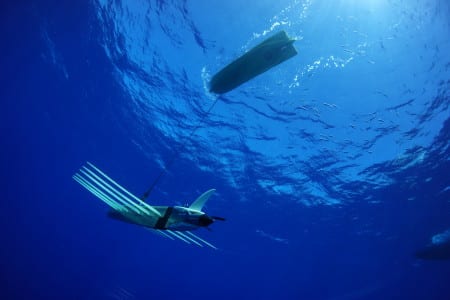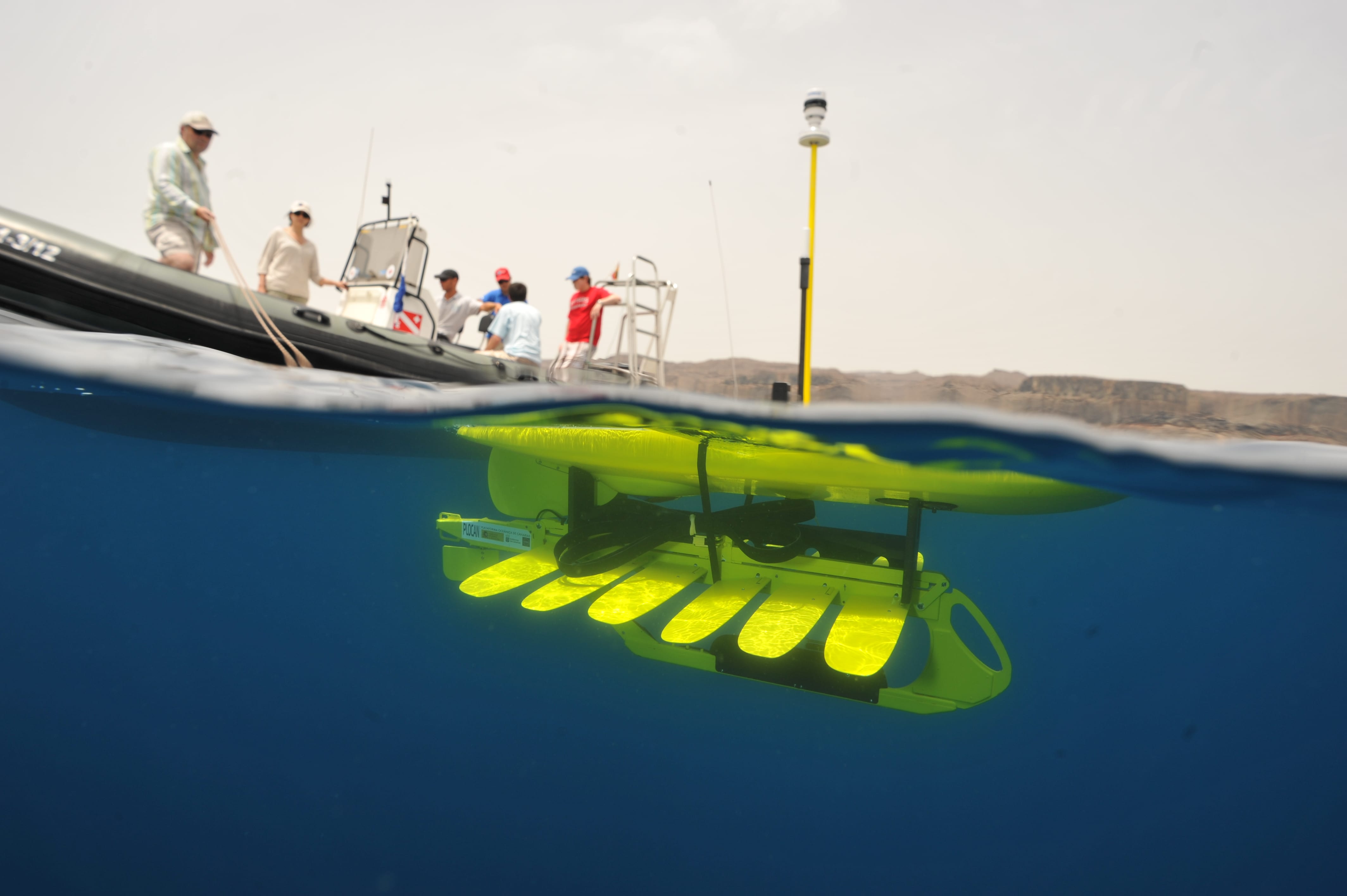When tasked with surveying potential offshore drilling sites, oil and gas companies have oft relied on 20th century tech like boats and buoys to get the job done.
Until now.
In July, ConocoPhilips deployed a collection of seafaring drones in the Barents Sea off the coast of Norway and Russia in hopes that these unmanned machines will deliver critical data in a more cost-efficient way.
The six self-propelled underwater vehicles are on a data-gathering mission to collect information including wave height, temperature, and wind speed and direction. They’ll also sense whether hydrocarbons — indicative of oil and natural gas reserves — are coming from natural seeps that researchers have identified via satellite.

Image via Liquid Robotics
Called Wave Gliders, the crafts are built by Liquid Robotics, a Sunnyvale, Calif.-based maker of maritime robots. The machines are piloted remotely, powered by solar panels and sea waves, and share data via satellite and radio.
For oil and gas companies, they’re a low-cost way to gather data for drilling operations. “We’re constantly looking for ways to do the traditional business lines with fewer people, especially when you get to be offshore,” Liquid Robotics general manager Rod Nelson told Fortune. “What robots really bring is the ability to do something unmanned, for a really long time, more cheaply. The alternative is to put a ship out there, and that’s a much more expensive proposition.”
ConocoPhilips’ pilot program concludes in September and, if successful, could result in more industry participation and adoption.


Share this: